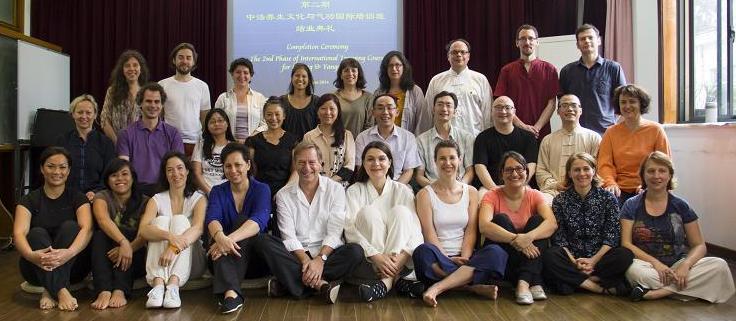| international_qigong_body-mind_training_prog_2014-2015.pdf | |
| File Size: | 3994 kb |
| File Type: | |
Click here to edit.
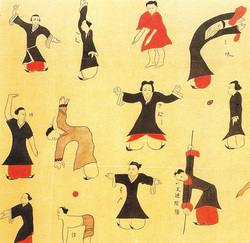
Qi Gong & YangSheng International Training - Shanghai, 2014-2015
养生文化与气功国际培训 - 上海,2014-2015
Discovering Chinese Philosophy through Qi Gong Body Awareness
通过形气神之修炼,感悟身心灵之大道
Shanghai Qi Gong Institut
上海市气功研究所
养生文化与气功国际培训 - 上海,2014-2015
Discovering Chinese Philosophy through Qi Gong Body Awareness
通过形气神之修炼,感悟身心灵之大道
Shanghai Qi Gong Institut
上海市气功研究所
International Training - Introduction
培训导言
The Shanghai Qigong Institute has been recognized for thirty years in China and is now releasing a Qigong International training program starting October 2013 with Les Temps du Corps – a French Chinese Cultural School with over 20 year’s history. Its unique training team is composed of Medical Qigong doctors, Qigong Pedagogy experts, and anthropologists specialized in Intercultural Education. The training is based on the traditional methods and practices of Qi Gong, and the founding principles and theories of Yangsheng.
上海市气功研究所是国内著名的气功研究机构,建所至今已有30余年的历史,从2013年1月开始,与法国东方文化中心合力推出了养生文化与气功国际培训班. 这个独一无二的中西文化联合培训项目集中了中外气功医学博士、气功培训专家和跨文化教育领域的人类学家. 它将传授给学员多种中华传统气功功法和理法,以及中医养生学的基础理论和技巧。
Qigong & YangSheng Culture – Introduction
气功简介
Qigong belongs to Chinese YangSheng Culture. This philosophy of "nurturing life" includes a set of Traditional Chinese Medecine practices that focus on the energetic capital of the human being and its care taking. Qigong, or « exercise of the Qi » aims to harmonize breath, movement and the ability to focus. Influenced by the wisdom of three Chinese thought schools -Taoism, Buddhism, and Confucianism - contemporary YangSheng and Qigong have gradually become a culture and method for an individual’s awareness of Life, adaptation to the natural environment, and construction of a harmonious world.
气功是中国养生文化的重要组成部分,具有极强的实践性。内容涉及传统哲学、中医学、养生学、功法学、认知学等多学科内容。气功,即“调控气机的技术”. 内容包括身、心、灵的调整与锻炼,其目的是为了达到形、气、神三者之间的和谐与完美. 深受中国传统儒、释、道三家智慧的影响,当代养生气功已经逐渐发展成为个体感悟生命、适应自然环境、构建和谐世界的一种文化与方法。
Graduation Ceremony, Groups 1 & 2, June 22, 2014
培训导言
The Shanghai Qigong Institute has been recognized for thirty years in China and is now releasing a Qigong International training program starting October 2013 with Les Temps du Corps – a French Chinese Cultural School with over 20 year’s history. Its unique training team is composed of Medical Qigong doctors, Qigong Pedagogy experts, and anthropologists specialized in Intercultural Education. The training is based on the traditional methods and practices of Qi Gong, and the founding principles and theories of Yangsheng.
上海市气功研究所是国内著名的气功研究机构,建所至今已有30余年的历史,从2013年1月开始,与法国东方文化中心合力推出了养生文化与气功国际培训班. 这个独一无二的中西文化联合培训项目集中了中外气功医学博士、气功培训专家和跨文化教育领域的人类学家. 它将传授给学员多种中华传统气功功法和理法,以及中医养生学的基础理论和技巧。
Qigong & YangSheng Culture – Introduction
气功简介
Qigong belongs to Chinese YangSheng Culture. This philosophy of "nurturing life" includes a set of Traditional Chinese Medecine practices that focus on the energetic capital of the human being and its care taking. Qigong, or « exercise of the Qi » aims to harmonize breath, movement and the ability to focus. Influenced by the wisdom of three Chinese thought schools -Taoism, Buddhism, and Confucianism - contemporary YangSheng and Qigong have gradually become a culture and method for an individual’s awareness of Life, adaptation to the natural environment, and construction of a harmonious world.
气功是中国养生文化的重要组成部分,具有极强的实践性。内容涉及传统哲学、中医学、养生学、功法学、认知学等多学科内容。气功,即“调控气机的技术”. 内容包括身、心、灵的调整与锻炼,其目的是为了达到形、气、神三者之间的和谐与完美. 深受中国传统儒、释、道三家智慧的影响,当代养生气功已经逐渐发展成为个体感悟生命、适应自然环境、构建和谐世界的一种文化与方法。
Graduation Ceremony, Groups 1 & 2, June 22, 2014
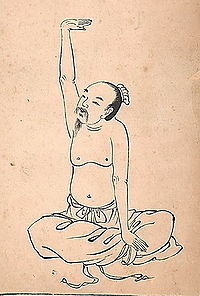
Ba Duan Jin - Eight pieces of Brocade» 八段锦
Pr. Xiao Bin 肖斌老师
This dynamic Qigong was conceived to improve health and it is the most widely spread across China. It combines muscular contraction and release, enables good blood and energy circulation, while massaging the internal organs.
八段锦是中国传统养生功法之一,流传广泛。其主要作用是行气活血、舒筋通络。现代研究认为,该功法的功效在于结合全身肌肉的松弛和收缩,来促进气血循环,同时达到按摩脏腑的作用。
Pr. Xiao Bin 肖斌老师
This dynamic Qigong was conceived to improve health and it is the most widely spread across China. It combines muscular contraction and release, enables good blood and energy circulation, while massaging the internal organs.
八段锦是中国传统养生功法之一,流传广泛。其主要作用是行气活血、舒筋通络。现代研究认为,该功法的功效在于结合全身肌肉的松弛和收缩,来促进气血循环,同时达到按摩脏腑的作用。

Jing Gong or « static practice » (Meditation) 静功
Pr. Zhao Xiao Ting 赵晓霆老师
Jing Gong is a practice of Qi Gong static in the outside, but moving inside. It allows great introspection to understand the "Qi" through one's body, breathing and consciousness. Jing Gong is also an exercise on the way to peace. This work uses visualization and breathing techniques specific to Buddhism, Taoism and Chinese Medicine.
松静站桩功 : 本功法是气功内功修习内容,通过柔和的内劲引导和锻炼,取代肌肉力量和身体僵劲,从而松解全身关节,通畅全身气机,以及改变人的对抗性情绪习惯,达到自身和他人的和谐
Pr. Zhao Xiao Ting 赵晓霆老师
Jing Gong is a practice of Qi Gong static in the outside, but moving inside. It allows great introspection to understand the "Qi" through one's body, breathing and consciousness. Jing Gong is also an exercise on the way to peace. This work uses visualization and breathing techniques specific to Buddhism, Taoism and Chinese Medicine.
松静站桩功 : 本功法是气功内功修习内容,通过柔和的内劲引导和锻炼,取代肌肉力量和身体僵劲,从而松解全身关节,通畅全身气机,以及改变人的对抗性情绪习惯,达到自身和他人的和谐
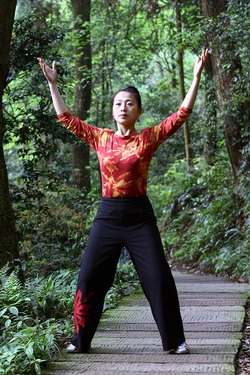
20 Movements (Pr. Ke Wen 柯文老师)
The 20 Movements for Health are composed of 4 routines of 5 fundamental exercises: (a) general direction of energy movements, (b) movements of the upper limbs, (c) movements of pelvis and spine, (d) movements of lower limbs. These basic exercises are easy to memorize and specially adapted to develop the perception of Qi and the synchronization of Breath with body movements.
二十健康动作包括四个系列,每个系列有五个基本动作。(a) 能量运动的主要方向、 (b)上部跛行运动、 (c) 骨盆和脊柱运动,(d) 低跛行运动。这些基础练习容易记住,它们特别让发展气的悟性,而帮助同步运动身体和呼吸.
The 20 Movements for Health are composed of 4 routines of 5 fundamental exercises: (a) general direction of energy movements, (b) movements of the upper limbs, (c) movements of pelvis and spine, (d) movements of lower limbs. These basic exercises are easy to memorize and specially adapted to develop the perception of Qi and the synchronization of Breath with body movements.
二十健康动作包括四个系列,每个系列有五个基本动作。(a) 能量运动的主要方向、 (b)上部跛行运动、 (c) 骨盆和脊柱运动,(d) 低跛行运动。这些基础练习容易记住,它们特别让发展气的悟性,而帮助同步运动身体和呼吸.
Purposes and teaching 目的和课程 : 2nd Year Training
(A) To develop awareness of body-mind unity
身心合一的文化
70 hours / 70小时
Click here to edit.
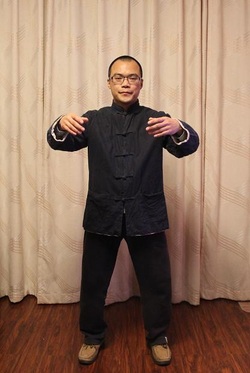
Liu Zi Jue - Qi Gong of Six Sounds 六字诀 (Pr. Sun Lei 孙磊老师)
Liu Zi Jue, also called Liu Zi Qi Jue, is a method for body-building and health
preservation through Tu Na breathing. Qi moves and regulates in various organs.
The rising, descending, coming in and going out of Qi Movement between
different organs form the harmonious unity of opposites in the body. This process
ensures a continuous substance intake from nature, and maintains metabolism and
a dynamic balance of energy conversion through transformation, purification and
excretion. Jointly accomplishing the metabolism of the whole body, Liu Zi Jue
improves the normal progress of life activity. This method complements Dao Yin
exercises (breathing, stretching, self-massage) in regulating the energy in the
organs by using the voice to guide the flow of Qi.
六字诀,又称六字气诀,是以呼吸吐纳为主要手段的健身养生方法。由于人
体各脏腑之气的运动调畅,各脏腑之间的气机升降出入处于一个协调的对立
统一体中,从而保证了人体不断地从自然界中摄取生命活动的所需物质,并
通过气化作用,升清降浊,摄取精微,排泄废物,维持物质代谢和能量转换
的动态平衡,共同完成整个机体的新陈代谢,促进了生命活动的正常进行。
该功法通过声音引气,配合导引形体来调节脏腑气机。
Liu Zi Jue, also called Liu Zi Qi Jue, is a method for body-building and health
preservation through Tu Na breathing. Qi moves and regulates in various organs.
The rising, descending, coming in and going out of Qi Movement between
different organs form the harmonious unity of opposites in the body. This process
ensures a continuous substance intake from nature, and maintains metabolism and
a dynamic balance of energy conversion through transformation, purification and
excretion. Jointly accomplishing the metabolism of the whole body, Liu Zi Jue
improves the normal progress of life activity. This method complements Dao Yin
exercises (breathing, stretching, self-massage) in regulating the energy in the
organs by using the voice to guide the flow of Qi.
六字诀,又称六字气诀,是以呼吸吐纳为主要手段的健身养生方法。由于人
体各脏腑之气的运动调畅,各脏腑之间的气机升降出入处于一个协调的对立
统一体中,从而保证了人体不断地从自然界中摄取生命活动的所需物质,并
通过气化作用,升清降浊,摄取精微,排泄废物,维持物质代谢和能量转换
的动态平衡,共同完成整个机体的新陈代谢,促进了生命活动的正常进行。
该功法通过声音引气,配合导引形体来调节脏腑气机。
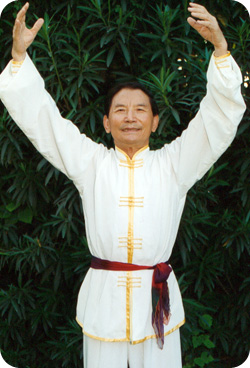
Hui Chun Gong - Exercise for the Return of Spring 回春功
Pr. Ke Wen 柯文老师
Hui Chun Gong, literally "Exercise for the Return of Spring" is also known with its
complete name: "Chinese Ancient Method for Longevity". Its origins are found in
the Huashan school of Quan Zhen Dao, with more than 800 years of history. This
practice emphasizes an organic integration of various methods such as Dao Yin
exercises, Tu Na breathing, massage, Yuan He (inner peace), and "tonifing the
brain with essence" (huan jing bu nao). Hui Chun Gong includes both static and
dynamic practices, in a holistic approach of the body that exercises its three
different kinds of energy –physical essence (jing), vital energy (qi) and spirit
(shen)– in order to improve flexibility and movement.
回春功:全名“中国古代养生长寿术”,源于全真道华山派,历今八百余年。
本功法注重导引、吐纳、按摩、元和、还精补脑诸术的有机结合,是一种动
静双修、精气神形齐练的全身性柔韧运动。
Pr. Ke Wen 柯文老师
Hui Chun Gong, literally "Exercise for the Return of Spring" is also known with its
complete name: "Chinese Ancient Method for Longevity". Its origins are found in
the Huashan school of Quan Zhen Dao, with more than 800 years of history. This
practice emphasizes an organic integration of various methods such as Dao Yin
exercises, Tu Na breathing, massage, Yuan He (inner peace), and "tonifing the
brain with essence" (huan jing bu nao). Hui Chun Gong includes both static and
dynamic practices, in a holistic approach of the body that exercises its three
different kinds of energy –physical essence (jing), vital energy (qi) and spirit
(shen)– in order to improve flexibility and movement.
回春功:全名“中国古代养生长寿术”,源于全真道华山派,历今八百余年。
本功法注重导引、吐纳、按摩、元和、还精补脑诸术的有机结合,是一种动
静双修、精气神形齐练的全身性柔韧运动。
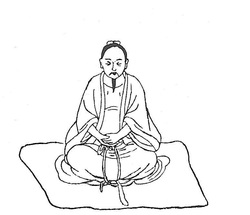
Jing Gong - "Static Practice" (Meditation) 静功
&
Ba Duan Jin ‘Lao Jia’ 八段锦 ( Review )
(see 1st Year program teaching)
Pr. Zhao Xiao Ting 赵晓霆老师
&
Ba Duan Jin ‘Lao Jia’ 八段锦 ( Review )
(see 1st Year program teaching)
Pr. Zhao Xiao Ting 赵晓霆老师
(B) Discover the principles of YangSheng Culture
体悟气功养生文化的要诀
(1st & and 2nd Years Training)
15 hours (1st year) / 15小时 (第一年)
21 hours (2nd year) / 18小时 (第二年)
3 hours / 3小时 The notion of Qi in Traditional Chinese Medicine (1st year) - Pr. Li Jie
中国传统医学中的“气”的概念 (第一年) - 李洁老师
3 hours / 3小时 Yin and Yang and the Five elements interactions (1st year) - Pr. Li Jie
阴阳理论和五行学说 (第一年) - 李洁老师
4 hours / 4小时 Meridians Theory (2nd year) – Pr Li Jie
经络理论 (第二年) - 李洁老师
4 hours / 4小时 Theory of 5 organs in TCM (2nd year) - Pr Li Jie
脏腑理论 (第二年) - 李洁老师
4 hours / 4小时 Qi Gong and TCM Basic Theory (2nd year) - Pr Li Jie
气功与中医基础理论(第二年) - 李洁老师
3 hours / 3小时 Qi Gong & Calligraphy (1st & 2nd Year) – Pr. Xiao Bin
气功和书法 (第一年和第二年) -肖斌老师
3 hours / 3小时 Qi Gong & Tuina (1st & 2nd year) – Pr. Sun Lei
气功和推拿 (第一年和第二年) -孙磊老师
3 hours / 3小时 Qi Gong & History – Museum (1st & 2nd year) - Pr. Xu Feng
气功和历史 (第一年和第二年) - 许峰老师
Click here to edit.
(C) Qi Gong, Body-Mind Health & Intercultural Training
创建跨文化的身体-意识-健康知识结构
(1st & and 2nd Years Training)
Analysis Personal Training through Anthropological perspective of Body-Mind Health
将个人体验、传统功法和现代科学研究整合起来认识“身-心”健康
Pr. Marceau Chenault & Pr. Bernard Fernandez
将个人体验、传统功法和现代科学研究整合起来认识“身-心”健康
Pr. Marceau Chenault & Pr. Bernard Fernandez
TEACHING TEAM 教学团队
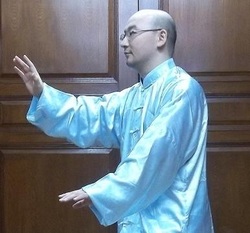
Dr. 赵晓霆 Zhao Xiaoting
Deputy Director of Teaching and Research Department of Shanghai Qigong Institute, Shanghai University of Traditional Chinese Medicine. Professor of Qigong and Chinese medicine. Qigong and massage doctor.
Directeur adjoint du département d'education et de recherche de l'Institut de Qi Gong, a l'Universite de Medecine Traditionnelle Chinoise de Shanghai. Professeur de Qigong et de médecine chinoise. Docteur de massage et de Qigong.
上海中医药大学上海市气功研究所气功教研室副主任,中医气功教授,气功、推拿医师
Deputy Director of Teaching and Research Department of Shanghai Qigong Institute, Shanghai University of Traditional Chinese Medicine. Professor of Qigong and Chinese medicine. Qigong and massage doctor.
Directeur adjoint du département d'education et de recherche de l'Institut de Qi Gong, a l'Universite de Medecine Traditionnelle Chinoise de Shanghai. Professeur de Qigong et de médecine chinoise. Docteur de massage et de Qigong.
上海中医药大学上海市气功研究所气功教研室副主任,中医气功教授,气功、推拿医师
Click here to edit.
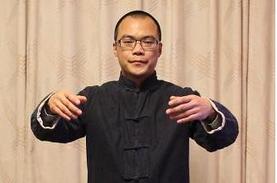
Dr. 孙磊, Sun Lei
Clinic Director of Shanghai Qigong Institute, Shanghai University of Traditional Chinese Medicine. Professor of Qigong and Chinese medicine. Qigong and massage doctor.
Directeur clinique de l'Institut de Qi Gong, à l'Université de Médecine Traditionnelle Chinoise de Shanghai. Professeur de Qigong et de médecine chinoise. Docteur de massage et de Qigong.
上海中医药大学上海市气功研究所门诊部主任,中医气功教授,气功、推拿医师
Clinic Director of Shanghai Qigong Institute, Shanghai University of Traditional Chinese Medicine. Professor of Qigong and Chinese medicine. Qigong and massage doctor.
Directeur clinique de l'Institut de Qi Gong, à l'Université de Médecine Traditionnelle Chinoise de Shanghai. Professeur de Qigong et de médecine chinoise. Docteur de massage et de Qigong.
上海中医药大学上海市气功研究所门诊部主任,中医气功教授,气功、推拿医师
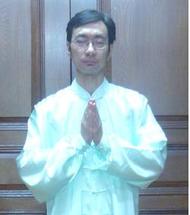
Dr.肖斌, Xiao Bin
Director of Teaching and Research Department of Shanghai Qigong Institute, Shanghai University of Traditional Chinese Medicine. Professor of Qigong and Chinese medicine. Qigong and massage doctor.
Directeur du département d’éducation et de recherche de l'Institut de Qi Gong, à l'Université de Médecine Traditionnelle Chinoise de Shanghai. Professeur de Qigong et de médecine chinoise. Docteur de massage et de Qigong.
上海中医药大学上海市气功研究所气功教研室主任,中医气功教授,气功、推拿医师
Director of Teaching and Research Department of Shanghai Qigong Institute, Shanghai University of Traditional Chinese Medicine. Professor of Qigong and Chinese medicine. Qigong and massage doctor.
Directeur du département d’éducation et de recherche de l'Institut de Qi Gong, à l'Université de Médecine Traditionnelle Chinoise de Shanghai. Professeur de Qigong et de médecine chinoise. Docteur de massage et de Qigong.
上海中医药大学上海市气功研究所气功教研室主任,中医气功教授,气功、推拿医师
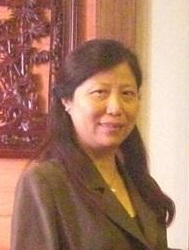
Dr. 李洁 Li Jie
Traditional Chinese Medecine (1st & 2nd Year)
Director of the Shanghai Qigong Research Institute, Doctor of medicine, researcher,
and academic advisor for Master’s Degree students. She also holds the posts of
permanent member of the Council and member of the Academic Committee for the
World Academic Society of Medical Qigong; Vice-president of the Shanghai Health
Qigong Association.
医学博士,研究员,硕士生导师。现任上海市气功研究所所长。兼任世界医学气
功学会常务理事、世界医学气功学会学术委员会委员、上海市健身气功协会副会
长、中华中医药学会名医学术研究专业委员会常务委员、国际中医药临床随机对
照试验报告统一规范(CONSORT for TCM)专家委员会委员、中国替代与补充
医学协作网(CNCAM)学术委员会委员、中国替代与补充医学协作网教育委员
会委员、《中国循证医学杂志》编委。
Traditional Chinese Medecine (1st & 2nd Year)
Director of the Shanghai Qigong Research Institute, Doctor of medicine, researcher,
and academic advisor for Master’s Degree students. She also holds the posts of
permanent member of the Council and member of the Academic Committee for the
World Academic Society of Medical Qigong; Vice-president of the Shanghai Health
Qigong Association.
医学博士,研究员,硕士生导师。现任上海市气功研究所所长。兼任世界医学气
功学会常务理事、世界医学气功学会学术委员会委员、上海市健身气功协会副会
长、中华中医药学会名医学术研究专业委员会常务委员、国际中医药临床随机对
照试验报告统一规范(CONSORT for TCM)专家委员会委员、中国替代与补充
医学协作网(CNCAM)学术委员会委员、中国替代与补充医学协作网教育委员
会委员、《中国循证医学杂志》编委。
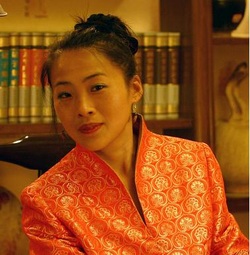
柯文, KE Wen
Founder and Training Director of the School Les Temps du Corps in Paris. For 20 years, she have trained over 900 professors of Qi Gong in France. Expert in Qi Gong and Chinese philosophy, she is the autor of two famous books : " Enter in the practice of Qi Gong" and "The way of peace".
Fondatrice et formatrice de l'Ecole des Temps du Corps depuis 20 ans, forme plus de 900 professeurs de Qi Gong en France. Experte de Qi Gong et de Philosophie Chinoise. Auteur de deux livres à succès : "Entrez dans la pratique du Qi Gong" et "La voie du calme".
法国东方文化中心创办者,中国气功文化与哲学思想专家,在法国培养了近900气功教练。她的两本书“走进气功世界与它的哲学理念”、“静,用身心感悟中国文化与智慧”在法国获得很大成功
Founder and Training Director of the School Les Temps du Corps in Paris. For 20 years, she have trained over 900 professors of Qi Gong in France. Expert in Qi Gong and Chinese philosophy, she is the autor of two famous books : " Enter in the practice of Qi Gong" and "The way of peace".
Fondatrice et formatrice de l'Ecole des Temps du Corps depuis 20 ans, forme plus de 900 professeurs de Qi Gong en France. Experte de Qi Gong et de Philosophie Chinoise. Auteur de deux livres à succès : "Entrez dans la pratique du Qi Gong" et "La voie du calme".
法国东方文化中心创办者,中国气功文化与哲学思想专家,在法国培养了近900气功教练。她的两本书“走进气功世界与它的哲学理念”、“静,用身心感悟中国文化与智慧”在法国获得很大成功
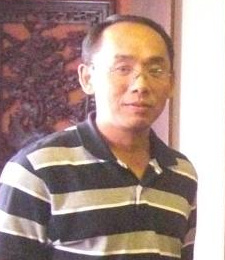
Dr. 许峰Xu Feng
Qigong History – Museum (1st & 2nd Year)
Deputy Director of the Shanghai Qi Gong Institute in the Shanghai University of
Traditional Chinese Medicine. He is Professor of Medical Qigong and Clinical
Physician in TCM specialized in Qigong and Tuina. Senior teacher and practionner of
Medical Qi Gong, he is currently Director of the Chinese Society of Medical Qigong
and of the Shanghai Health Qigong Association.
上海中医药大学上海市气功研究所副所长,中医气功教授,中医气功、
推拿临床医师.长期从事中医气功学的医疗与教学工作。目前兼任中国医
学气功学会理事、上海市健身气功协会理事。
Qigong History – Museum (1st & 2nd Year)
Deputy Director of the Shanghai Qi Gong Institute in the Shanghai University of
Traditional Chinese Medicine. He is Professor of Medical Qigong and Clinical
Physician in TCM specialized in Qigong and Tuina. Senior teacher and practionner of
Medical Qi Gong, he is currently Director of the Chinese Society of Medical Qigong
and of the Shanghai Health Qigong Association.
上海中医药大学上海市气功研究所副所长,中医气功教授,中医气功、
推拿临床医师.长期从事中医气功学的医疗与教学工作。目前兼任中国医
学气功学会理事、上海市健身气功协会理事。
Click here to edit.
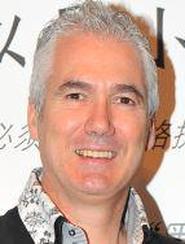
Dr. Fernandez Bernard
Doctor in Education Sciences and Cultural Anthropology, Managing Director of EKTA Asia Management, he is an expert of cross-cultural training. He works on body representation and cross-cultural experience between Europe and Asia for more than 25 years. He has lived 4 years in India and 12 years China.
Docteur en Sciences Humaines, directeur général de la société EKTA Asia Management, il est un expert dans le domaine de la formation interculturelle. Il a vécu 4 ans en Inde et 12 ans en Chine. Il travaille depuis plus de 25 ans sur la place du corps dans les représentations entre l'Europe et l'Asie ainsi que l’expérience interculturelle d’Occidentaux en Asie.
教育学和人类学博士,开道管理咨询(上海)有限公司总经理,跨文化培训领域的专家。在欧洲和亚洲从事身体语言和跨文化活动长达25年。他在印度生活了4年,中国12年
Doctor in Education Sciences and Cultural Anthropology, Managing Director of EKTA Asia Management, he is an expert of cross-cultural training. He works on body representation and cross-cultural experience between Europe and Asia for more than 25 years. He has lived 4 years in India and 12 years China.
Docteur en Sciences Humaines, directeur général de la société EKTA Asia Management, il est un expert dans le domaine de la formation interculturelle. Il a vécu 4 ans en Inde et 12 ans en Chine. Il travaille depuis plus de 25 ans sur la place du corps dans les représentations entre l'Europe et l'Asie ainsi que l’expérience interculturelle d’Occidentaux en Asie.
教育学和人类学博士,开道管理咨询(上海)有限公司总经理,跨文化培训领域的专家。在欧洲和亚洲从事身体语言和跨文化活动长达25年。他在印度生活了4年,中国12年
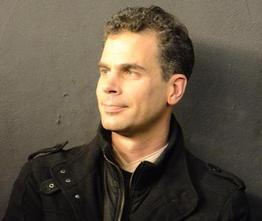
Dr.Chenault Marceau
PhD. in Sciences of Physical Education, Lecturer at East China Normal University, he's teaching Judo, Dance and Body Anthropology at the College of Physical Education and Health. His ethnographic research concern the Qi Gong and the Taijiquan experience in Chinese park. He is director of the Qi Dance Company.
Docteur en STAPS, Enseignant Chercheur a l'ECNU, il enseigne le judo, la danse et l'Anthropologie du corps a la Faculte d'Education Physique et de Sante. Ses recherches ethnographiques portent sur l'experience du Qi Gong et du Taijiquan dans les parcs chinois. Il est directeur de la Qi Dance Company a Shanghai.
华东师范大学教师、研究员,在体育与康复学院教授身体人类学、现代舞蹈、柔道,同时继续中国气功和太极拳的研究。“气舞”协会负责人
PhD. in Sciences of Physical Education, Lecturer at East China Normal University, he's teaching Judo, Dance and Body Anthropology at the College of Physical Education and Health. His ethnographic research concern the Qi Gong and the Taijiquan experience in Chinese park. He is director of the Qi Dance Company.
Docteur en STAPS, Enseignant Chercheur a l'ECNU, il enseigne le judo, la danse et l'Anthropologie du corps a la Faculte d'Education Physique et de Sante. Ses recherches ethnographiques portent sur l'experience du Qi Gong et du Taijiquan dans les parcs chinois. Il est directeur de la Qi Dance Company a Shanghai.
华东师范大学教师、研究员,在体育与康复学院教授身体人类学、现代舞蹈、柔道,同时继续中国气功和太极拳的研究。“气舞”协会负责人
Training conditions
培训安排
Place 地点
The Institute of Traditional Chinese Medicine and Qigong : 650 Wanping Nan Lu, Shanghai
上海市宛平南路650号 上海市气功研究所
Language 语言
Teaching in Chinese - English translation – possibility of French translation
汉语教学 - 英语翻译 - 法语翻译的可能性
Special Recommandations during training 实用信息
Pedagogical documents and references texts will be provide to the students,
Bring some materials to take notes during theoretical class
Bring comfortable clothes and water for qigong exercise
提供教材和参考资料. 在理论课上,建议学员携带纸笔记笔记
在气功练习课上,建议学员携带宽松的衣服和水
Calendar 2013 时间
1st Year 第一年,
Saturday 周六, 9.30am - 12.30pm
(* plus/加 14.00pm – 17.00pm)
Room 2 教室
2013
10 月 October: 12, 26*
11 月 November : 2, 9, 30
12 月 December: 7, 14
2014
1 月 January: 11, 18, 25
2 月 February: 8*, 15, 22
3 月 March : 1, 8, 29
4 月 April : 12*, 19*
5 月 May: 10, 17, 24
6 月 June: 7, 14, 21
2nd Year 第二年
Saturday 周六
9.00am - 13.00pm
(* plus/加 14.00pm – 17.00pm)
Room 1 教室
2013
9 月 September : 28
10 月 October: 12, 26*
11 月 November : 2, 23, 30
12 月 December: 7, 14
2014
1 月 January: 11, 25
2 月 February: 8*, 16, 22
3 月 March : 1, 8, 29
4 月 April : 12*, 19*
5 月 May: 10, 24
6 月 June: 7, 14, 21
Special Dates
特别日期
开学 Opening (1st & 2nd year)
10 月 12日 12th of October
武当山旅行 Travel in Wudang Shan:
四月 April: 26, 27, 28, 29, 30
期末考 Final examination: 14th of June
毕业典礼Ceremony : 21th of June
The Institute of Traditional Chinese Medicine and Qigong : 650 Wanping Nan Lu, Shanghai
上海市宛平南路650号 上海市气功研究所
Language 语言
Teaching in Chinese - English translation – possibility of French translation
汉语教学 - 英语翻译 - 法语翻译的可能性
Special Recommandations during training 实用信息
Pedagogical documents and references texts will be provide to the students,
Bring some materials to take notes during theoretical class
Bring comfortable clothes and water for qigong exercise
提供教材和参考资料. 在理论课上,建议学员携带纸笔记笔记
在气功练习课上,建议学员携带宽松的衣服和水
Calendar 2013 时间
1st Year 第一年,
Saturday 周六, 9.30am - 12.30pm
(* plus/加 14.00pm – 17.00pm)
Room 2 教室
2013
10 月 October: 12, 26*
11 月 November : 2, 9, 30
12 月 December: 7, 14
2014
1 月 January: 11, 18, 25
2 月 February: 8*, 15, 22
3 月 March : 1, 8, 29
4 月 April : 12*, 19*
5 月 May: 10, 17, 24
6 月 June: 7, 14, 21
2nd Year 第二年
Saturday 周六
9.00am - 13.00pm
(* plus/加 14.00pm – 17.00pm)
Room 1 教室
2013
9 月 September : 28
10 月 October: 12, 26*
11 月 November : 2, 23, 30
12 月 December: 7, 14
2014
1 月 January: 11, 25
2 月 February: 8*, 16, 22
3 月 March : 1, 8, 29
4 月 April : 12*, 19*
5 月 May: 10, 24
6 月 June: 7, 14, 21
Special Dates
特别日期
开学 Opening (1st & 2nd year)
10 月 12日 12th of October
武当山旅行 Travel in Wudang Shan:
四月 April: 26, 27, 28, 29, 30
期末考 Final examination: 14th of June
毕业典礼Ceremony : 21th of June
Registration conditions
报名
Participants 学员
Qi Gong Instructor or learner, Educator, Therapist, Artist, Personal health development,
Philosophical and Cultural interests, Management of body communication
气功教师,大学生,治疗师,艺术家,对个人发展、东方哲学、中西文化交流
及自我生命意义感兴趣的中外人士
Prices 价格
1st Year : 8000 RMB
First Year 第一年: 84 hours 小时
28 Sessions, 24 Saturday Morning (3h) & 4 Saturday afternoon (3h).
共28次课: 24次星期六上午课,4次星期六下午课. 每次3小时.
2nd Year : 9000 RMB
Second Year 第二年: 104 hours 小时
27 session, 23 Saturday morning (4 h) & 4 Saturday afternoon (3h).
共27次课: 23次星期六上午课 (4小时),4次星期六下午课 (3小时).
200 RMB
Weekly Training session every Thursday : 2.30pm / 4.30pm
Free for training members
气功练习,每周四下午2点到4点. 学员免费
Contact and Registration 联系人
Marceau CHENAULT 马素
In charge of the International Training
of Qigong and YangSheng Culture 培训负责人
Phone 手机: 13 585 618 363 / Email 电邮: [email protected]
Training Partners informations 合作方信息
The Shanghai Qigong Institute 上海市气功研究所 www.shqigong.com
Les Temps du Corps (Paris) 法国巴黎东方文化中心 www.tempsducorps.org
Qi Dance Project 气舞团 www.qidance.org
